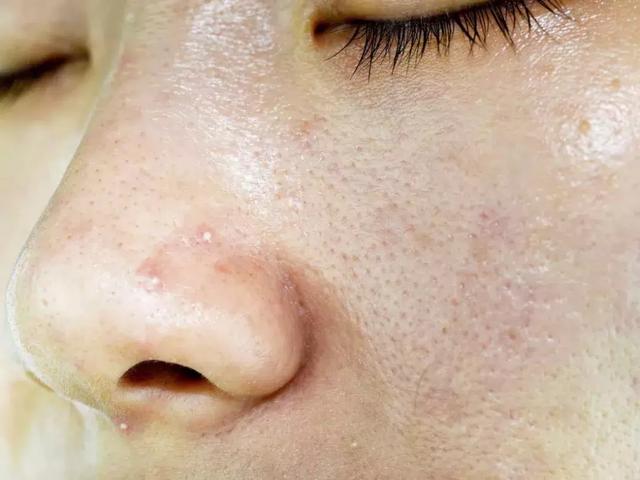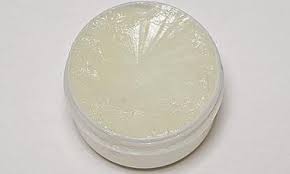- Home
- Trend
- Weight Loss Strategies
- Acne Tips
- Hair Health Information
- Blemish Removal Tips
- Acne Scar Removal Tips
- Muscle Building Techniques
- Intimate Care Tips
- Postpartum Intimate Care
- Eye Bags Wiki
- Tips for Face Slimming
- Secret of Permanent Hair Removal
- Breast Enlargement Tips
- Cure to Snoring
- Marionette Lines
- Skin-Tightening Secrets
Oily skin produces more sebum than other skin types, which makes it more prone to acne, blackheads, and whiteheads, and its condition tends to fluctuate more easily. While oily skin is mainly determined by genetics, with proper care, it is still possible to achieve smooth, refined skin. In this article, we’ll explore common issues faced by oily skin, what defines it, how to identify if you have oily skin, proper skincare routines, and even a professional treatment that targets acne, blackheads, and whiteheads. If this sounds like something you need—read on!
Must-know Basics: Characteristics of Oily Skin and Its Common Issues

Skin types generally fall into four categories: dry, normal, oily, and sensitive. Among them, oily skin tends to face the most issues, which can be frustrating. But oily skin is more than just an oily T-zone. It’s characterized by overactive sebaceous glands, with excess oil often concentrated around the forehead and nose. This leads to shine, enlarged pores, thickened skin, and a dull complexion.
That said, oily skin isn’t all bad—it tends to be more elastic and alkaline, meaning it’s less prone to aging. Women with oily skin often maintain a more youthful appearance.
Oily skin typically has a pH value between 5.6 and 6.6, making it more likely to attract pollutants and dust. If not cleansed properly, it can trigger skin sensitivity. Adolescents are especially affected due to increased sebum production, which clogs pores and leads to acne, blackheads, and whiteheads. Common issues linked to oily skin include breakouts, clogged pores, rough texture, and imbalanced moisture levels.
Why Oily Skin Becomes Worse in Summer
Sebum production increases by about 10% for every 1°C rise in temperature. On top of that, androgens stimulate the sebaceous glands, which is why women often feel even oilier in the summer months.
免費體驗
Acne Treatment
1 Minute Self-Registration
Date should not be before minimal date
How to Identify If You Have Oily Skin
By now, you might be wondering if you actually have oily skin. To know for sure, try this simple test:
After washing your face at night, skip all skincare products and leave your skin bare until the next morning. This allows your skin to return to its natural state for an accurate assessment.
In the morning, before washing your face, check the condition of your T-zone (forehead, nose, mouth, and chin):
• Both T-zone and cheeks feel dry or tight
• T-zone feels balanced, cheeks are soft and supple
• T-zone is oily, cheeks remain dry
• T-zone slightly oily, cheeks dry
• T-zone and cheeks both feel noticeably oily
If the last description applies to you, you most likely have oily skin. Oily skin is usually easy to identify because even areas beyond the T-zone tend to be shiny. If not properly cleansed, excess sebum and dead skin cells build up, leading to clogged pores, breakouts, and blackheads.
4 Skincare Products Oily Skin Should Avoid

Even though oily skin is more prone to problems, avoiding these four types of products can help prevent clogged pores and breakouts:
1. Heavy Ointments Containing Mineral Oil
Heavy, greasy ointments can clog pores, exacerbating acne and blackheads. Opt for lightweight, water- or gel-based moisturizers. Look for labels with “Noncomedogenic,” which means the product won’t clog pores.
2. Alcohol-based Products
Some toners and cleansers contain alcohol to remove excess oil. However, long-term use can damage your skin’s barrier, causing dryness, redness, and sensitivity—and may even trigger more acne.
3. Physical Exfoliants
Using harsh scrubs, like those with large granules or Dead Sea mud, can damage the skin’s surface and increase sensitivity. Overuse can thin the skin, weaken its defense, and worsen oiliness and irritation.
4. Hair Styling Products
Hair waxes and sprays, especially when misapplied directly to the scalp, can block follicles, increasing oil production and leading to scalp acne.
5 Proper Skincare Tips for Oily Skin
To truly address oily skin concerns like acne and blackheads, here are 5 essential skincare practices:
1. Control Your Cleansing Routine
Use a mildly alkaline cleanser and wash your face twice a day—morning and night. Adjust pressure based on skin area: gently massage the oilier T-zone and lightly cleanse the drier cheeks. Use water close to your skin temperature (ideally 20–30°C) to avoid stripping the natural skin barrier.
2. Choose Oil-Controlling and Hydrating Products
Even in humid weather like Hong Kong’s summer, opt for lightweight, oil-controlling skincare. Avoid products with sodium lauryl sulfate, sodium laureth sulfate, or alcohol. Instead, look for ingredients like Vitamin C, Vitamin E, green tea, and grape extracts to balance oil and moisture.
3. Use Sunscreen
Many oily skin types avoid sunscreen fearing more breakouts. But sun damage can dry out the skin, increase oil production, and worsen pigmentation. Choose non-comedogenic, lightweight, fragrance-free sunscreens to protect your skin without clogging pores.
4. Watch Your Diet
What you eat affects your skin. Avoid greasy, sugary foods, as they can stimulate oil production and trigger breakouts. Instead, eat water-rich fruits and high-fiber foods, and incorporate vitamins B and E to help detoxify and stabilize your skin.
5. Get Enough Sleep
Lack of sleep disrupts hormone balance, including adrenaline levels, which can throw off your skin’s oil production. This leads to enlarged pores and a dull, rough complexion.
免費體驗
Acne Treatment
1 Minute Self-Registration
Date should not be before minimal date
3 Common Myths About Oily Skin
Myth 1: Oily skin requires frequent washing and exfoliating
No, washing twice daily is enough. Over-washing strips natural oils, causing the skin to produce even more oil. Weekly exfoliation is sufficient to maintain a healthy barrier.
Myth 2: You need to choose between oil control and hydration
Both are important. Oily skin still needs moisture. Choose lightweight, small-molecule hydrators to improve absorption without weighing down the skin.
Myth 3: Skip lotions and creams if you have oily skin
Even oily skin needs hydration after cleansing and exfoliating. Use water-based lotions or serums as the final step in your routine to restore balance.
Best Treatment for Oily Skin Issues: Perfect Medical Acne Treatment
Traditional acne treatments often involve manual extraction, which can leave wounds, increase risk of scarring, or lead to recurrence if done improperly.
Perfect Medical’s Acne Treatment offers a professional, painless, non-invasive alternative. Using advanced skincare serums and a proprietary vacuum resurfacing technology, this treatment activates collagen repair, gently removes dead skin and impurities, clears pores, balances oil production, and dissolves blackheads—all without discomfort or downtime. Interested? Book your appointment today!
Free Trial: Perfect Medical Acne Treatment免費體驗
Acne Treatment
1 Minute Self-Registration
Date should not be before minimal date
FAQ

What are the characteristics of oily skin?
Skin types are generally categorized into four groups: dry, normal, oily, and sensitive. Among them, oily skin is often associated with more skin issues and can be particularly bothersome. But do you really know what defines oily skin? It’s not just about having a shiny face. Oily skin is marked by overactive sebum production, especially around the forehead and sides of the nose. It’s prone to oiliness, enlarged pores, buildup of dead skin cells, and a dull, yellowish complexion. However, oily skin isn’t all bad news—it has a natural advantage: it tends to be more elastic and slightly alkaline, which means women with oily skin often show signs of aging more slowly and appear younger.
How should oily skin be cared for?
If you have oily skin, it’s best to use a facial cleanser with a neutral to slightly alkaline pH and wash your face twice daily—once in the morning and once at night. When washing, pay special attention to your technique and frequency. If your T-zone feels oilier than the rest of your face while your cheeks are drier, you can gently massage the T-zone a few more times and softly cleanse the cheeks to achieve a balanced clean. Use water that’s close to your skin temperature—cool or room-temperature water is ideal. Try to keep the water temperature between 20 to 30 degrees Celsius to avoid stripping away your skin’s protective lipid layer, which can lead to dryness.
What types of products should people with oily skin avoid?
The first type of product to avoid is thick, greasy ointments. Since oily skin already produces excess sebum, applying heavy creams can easily clog pores and trigger issues like acne, blackheads, or whiteheads. It’s better to use lightweight moisturizers, such as water-based or gel-textured skincare products. When shopping for skincare, look closely at the ingredients list and check for the term “Noncomedogenic,” which indicates that the product has been tested and won’t clog pores.
How does the Perfect Medical Acne Treatment work?
The Perfect Medical Acne Treatment is a professional and effective solution for acne. It involves infusing medical-grade essence deep into the skin, combined with vacuum microdermabrasion to clean out oil and impurities from the pores—delivering a painless and non-invasive acne treatment. The treatment also incorporates a purifying formula that penetrates deeply, unclogs pores, and balances oil production. It is gentle on the skin and helps to quickly stimulate collagen regeneration, preventing pores from becoming clogged again and delivering lasting acne improvement. With proper skincare and cleansing after the treatment, the acne-clearing results can be even more pronounced.
Is the Perfect Medical Acne Treatment safe?
Yes, the Perfect Medical Acne Treatment is a professional and effective method for improving acne. It uses medical-grade essences infused into the deeper layers of the skin and vacuum microdermabrasion to remove deep-seated oil and debris, all while remaining non-invasive and painless. It also includes a deep-cleansing formula to unclog pores and balance sebum levels without irritating the skin. At the same time, it rapidly activates natural collagen repair mechanisms to prevent future clogging, achieving long-lasting acne relief. When combined with regular cleansing and proper skincare after the treatment, the results can be even more impressive.









